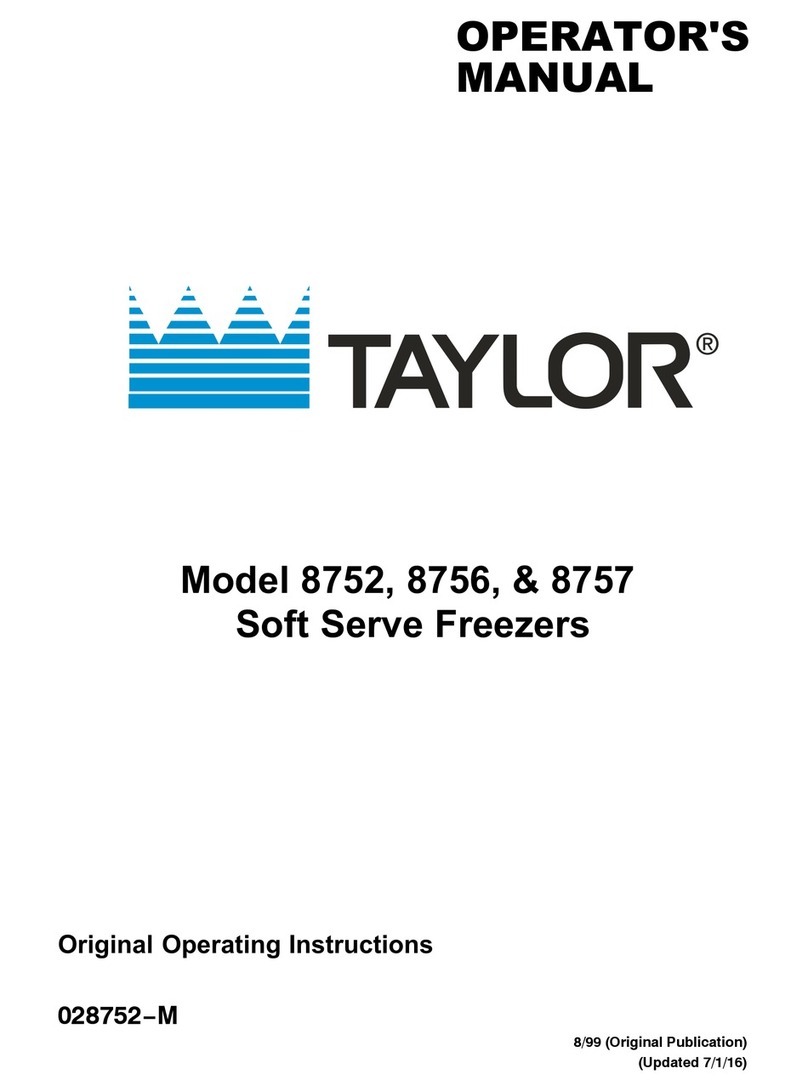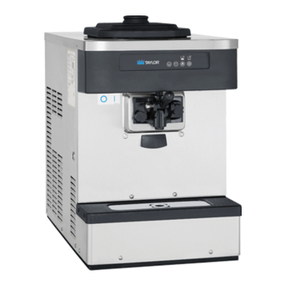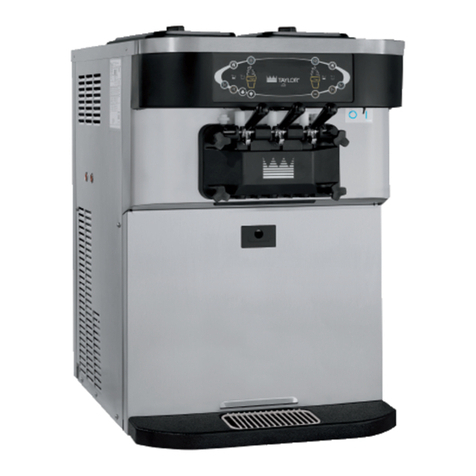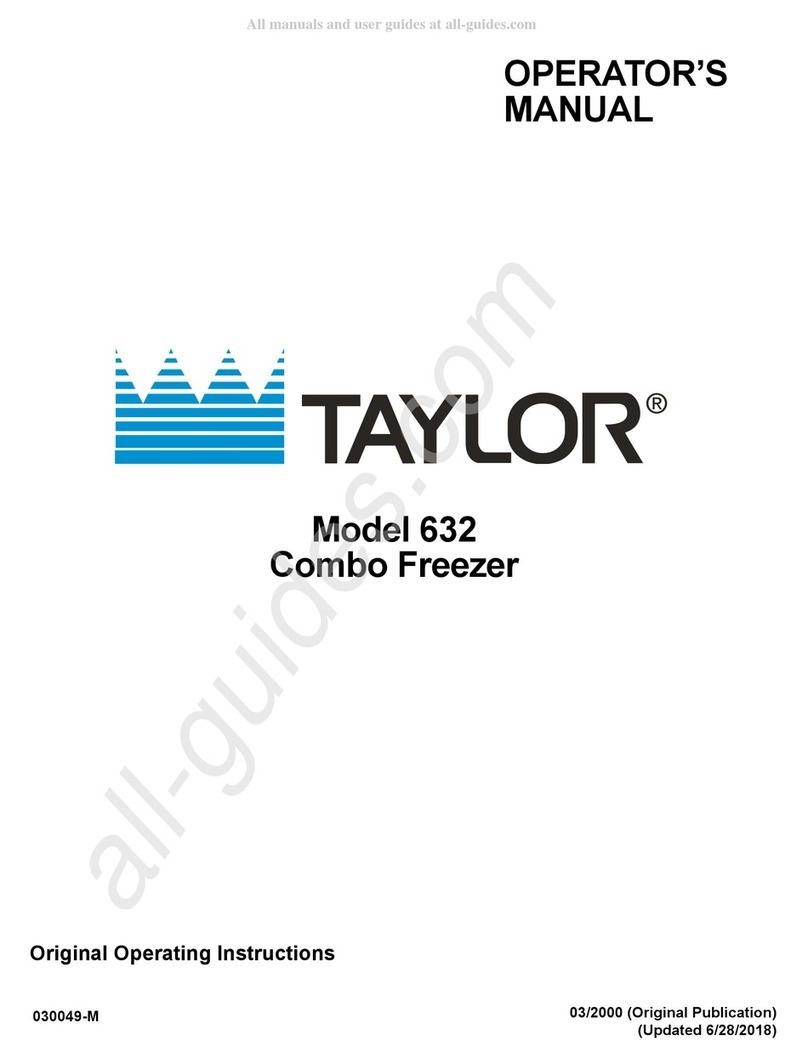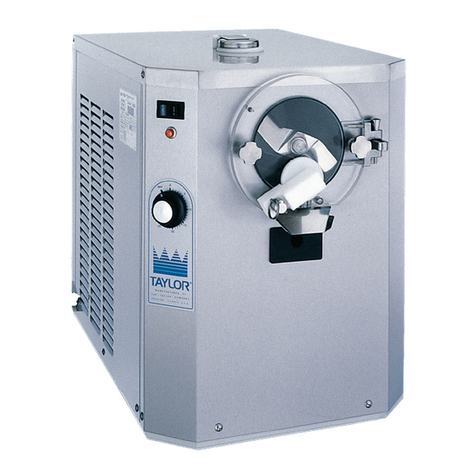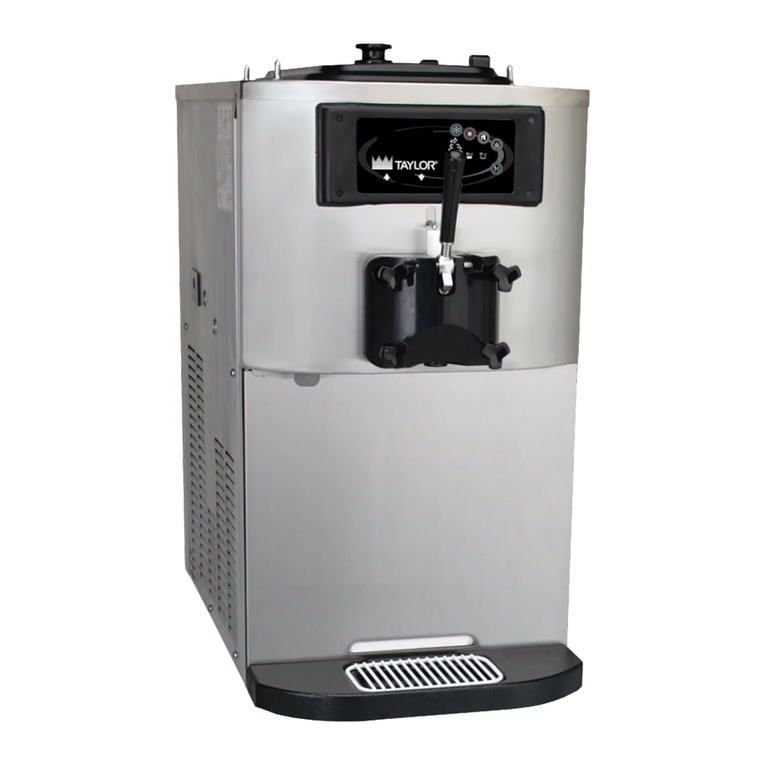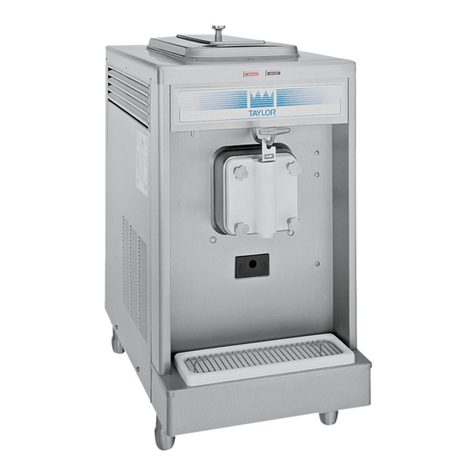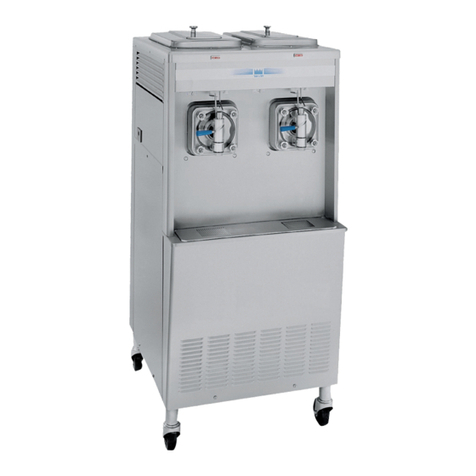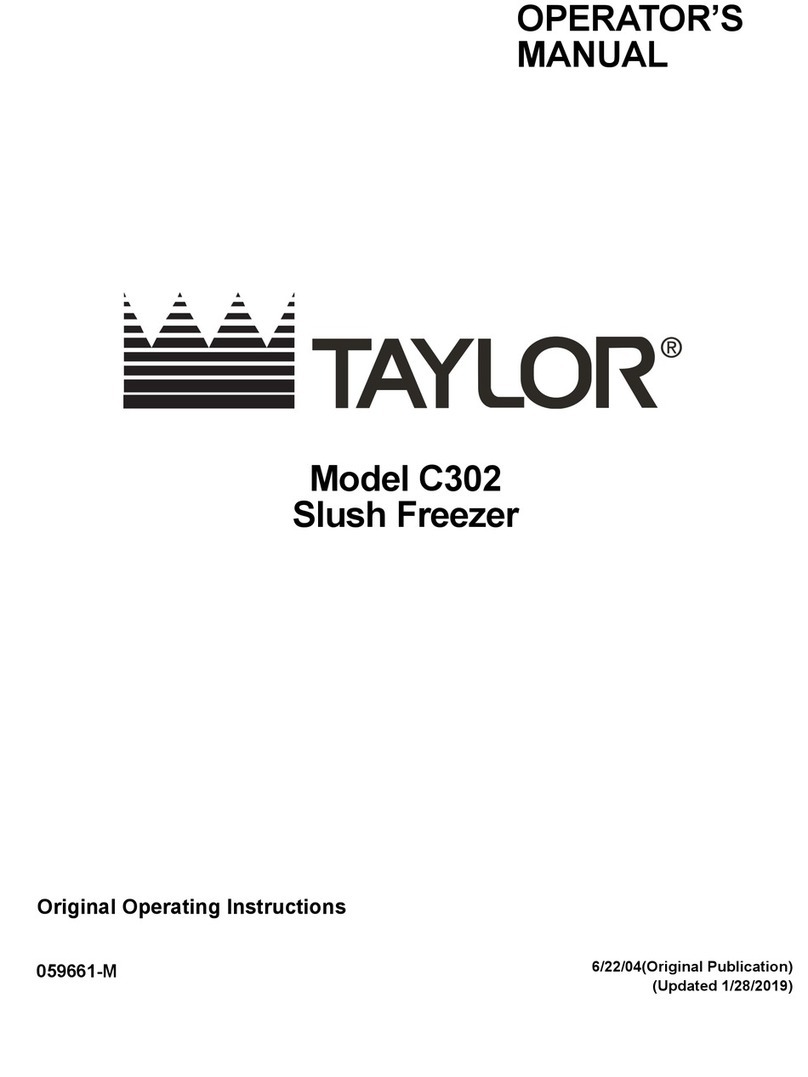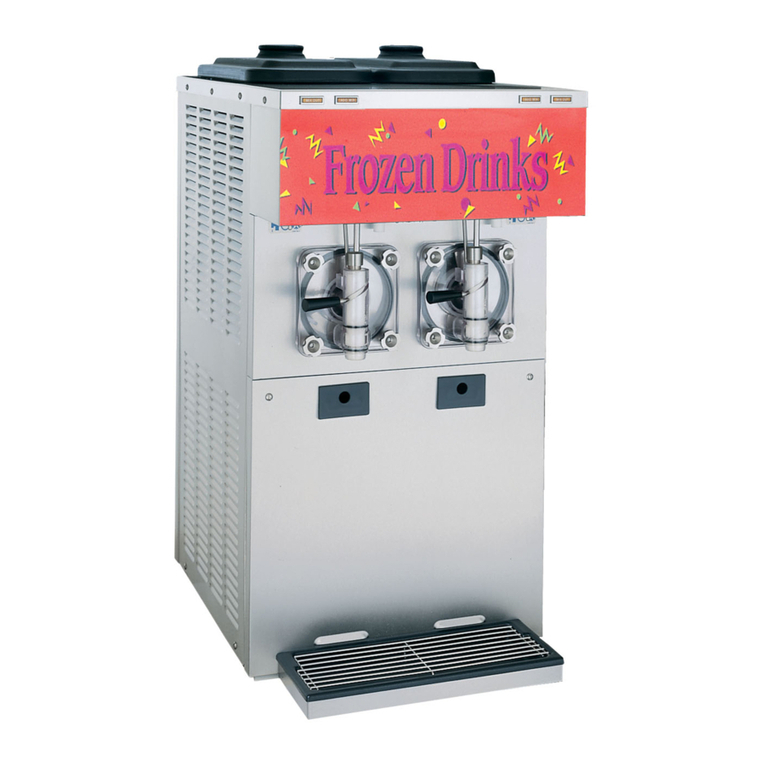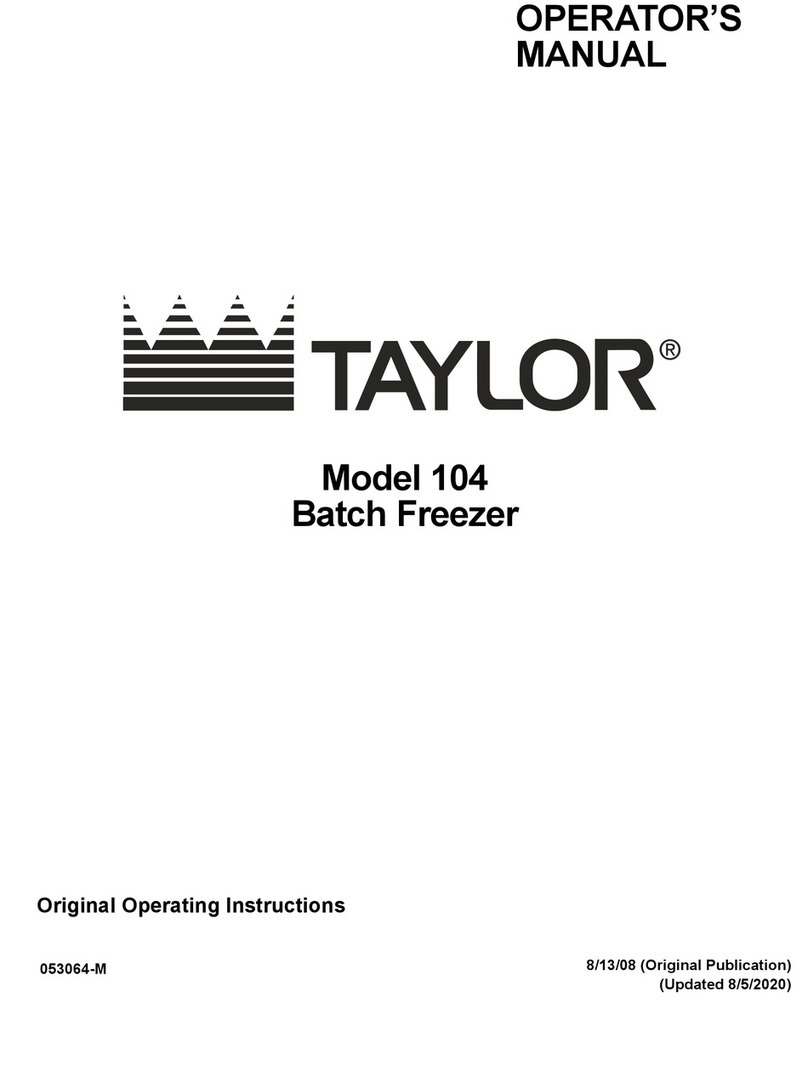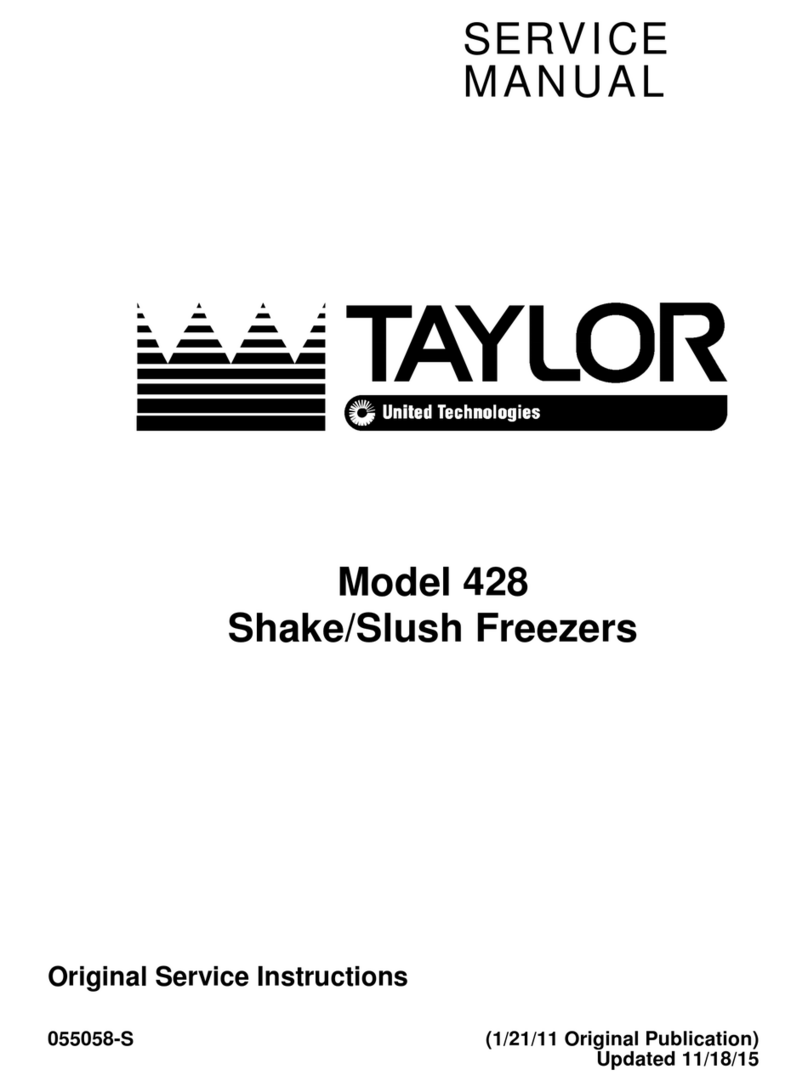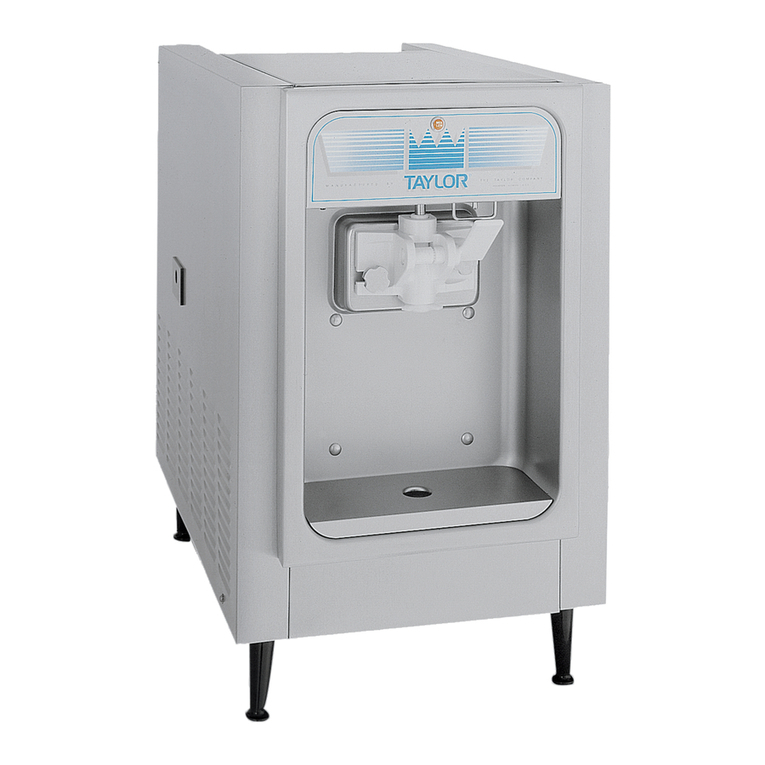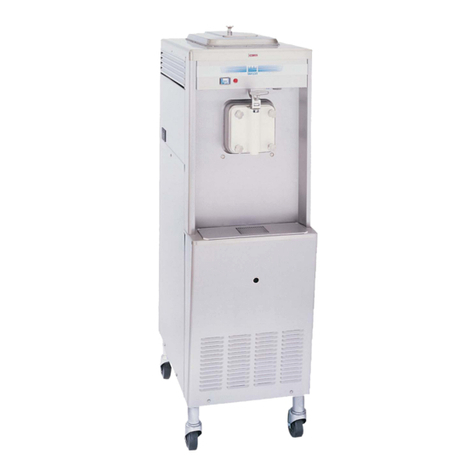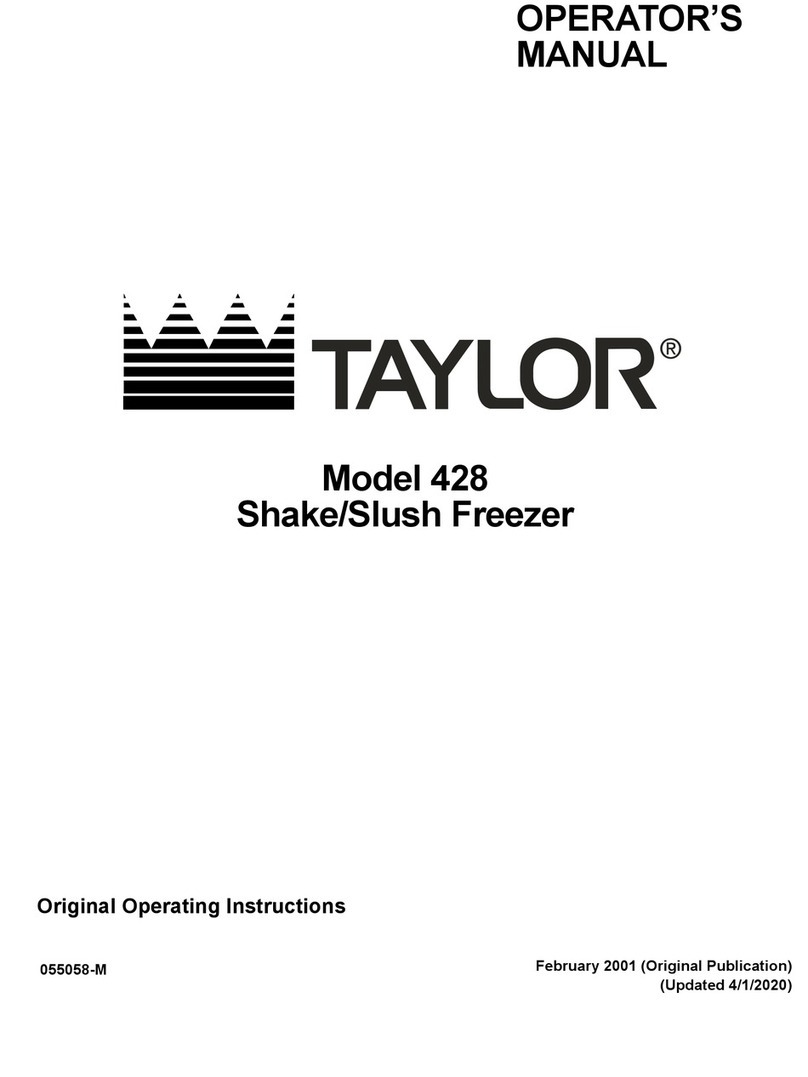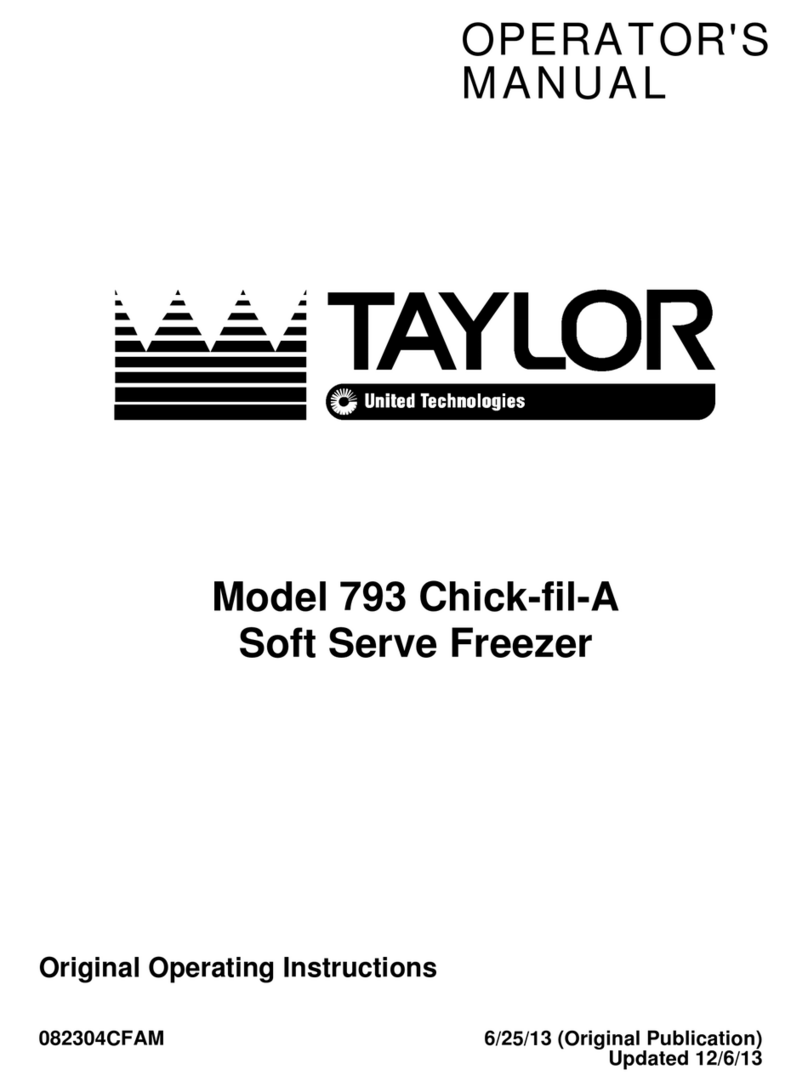
TO THE INSTALLER
1-3
Models 345, 346, 349, 355 NPR
To the Installer
1
WARNING! This machine must be properly
grounded. Failure to do so can result in severe personal
injury from electrical shock.
IMPORTANT! An equipotential grounding lug is
provided with this machine. Some countries require the
grounding lug to be properly attached to the rear of the
frame by the authorized installer. The installation location
is marked by the equipotential bonding symbol (5021 of
IEC 60417-1) on both the removable panel and the
machine's frame.
WARNING! Avoid injury.
•DO NOT operate the machine unless it is
properly grounded.
•DO NOT operate the machine with fuses larger
than specified on the machine's data label.
• All repairs should be performed by an
authorized Taylor service technician.
• The main power supplies to the machine must
be disconnected prior to performing installation,
repairs, or maintenance.
•For Cord-Connected Machines: Only Taylor
service technicians or licensed electricians may
install a plug or replacement cord on the
machine.
• Machines that are permanently connected to
fixed wiring and for which leakage currents may
exceed 10 mA, particularly when disconnected
or not used for long periods, or during initial
installation, shall have protective devices to
protect against the leakage of current, such as a
GFI, installed by the authorized personnel to
local codes.
• Stationary machines that are not equipped with
a power cord and a plug or another device to
disconnect the appliance from the power source
must have an all-pole disconnecting device with
a contact gap of at least 0.125 in. (3 mm) in the
external installation.
• Supply cords used with this machine shall be
oil-resistant, sheathed flexible cable not lighter
than ordinary polychloroprene or other
equivalent synthetic elastomer-sheathed cord
(code designation 60245 IEC 57) installed with
the proper cord anchorage to relieve conductors
from strain, including twisting, at the terminals
and protect the insulation of the conductors from
abrasion.
• If the supply cord is damaged, it must be
replaced by the manufacturer, service agent, or
a similarly qualified person to avoid a hazard.
• Secure supply cord ground lead to machine in a
location where if the cord is pulled the main
power leads become taut before the ground
lead can break loose.
Failure to follow these instructions may result in
electrocution. Contact your local authorized Taylor
distributor for service.
Beater Rotation
NOTICE! Beater rotation must be clockwise as
viewed looking into the freezing cylinder.
To correct the rotation on a three-phase machine,
interchange any two incoming power supply lines at the
machine main terminal block only. To correct rotation on
a single-phase machine, exchange leads inside the
beater motor. (Follow the diagram printed on the motor.)
Electrical connections are made directly to the terminal
block provided in the main control box located behind the
service panel.
It is recommended that beater rotation adjustment be
performed by an authorized Taylor service technician.
(This does not apply to the Model 355.)
Beater rotation must be clockwise as viewed looking into
the freezing cylinder.
Note: The following procedures must be performed by a
Taylor service technician.
